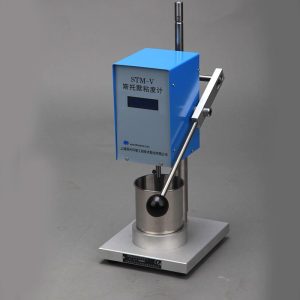Relația dintre vâscozitate și viteza de forfecare
Există o relație strânsă între vâscozitate și viteza de forfecare, which is the rate at which a liquid deforms under shearing force.

Shear rate is a physical quantity describing the rate of liquid deformation, representing the deformation rate within a unit time. It is the ratio of Shear velocity to the geometric constraint under which the liquid is placed. Shear rate is usually expressed as the ratio of the displacement difference per unit time (shear velocity) to the distance between two parallel layers (shear distance). The unit is usually the reciprocal of seconds (s^(-1)).
Relația dintre vâscozitate și viteza de forfecare
Viscozitate (Viscozitate) is the internal viscosity resistance of a liquid and a measure of viscosity or fluidity. Cu cât vâscozitatea este mai mare, the thicker the liquid and the more difficult it is to flow. Viscosity is usually expressed as the ratio of force per unit area to velocity difference per unit time (rata de forfecare). Unitățile sunt de obicei PASCAL secunde (Pa·s) or millipa seconds (mPa·s).
The relationship between viscosity and shear rate can be described by Newton’s law of fluid. Newtonian fluid is an idealized fluid with constant viscosity independent of shear rate. According to Newton’s Law of fluid, viscosity is equal to the ratio of stress to shear rate.
Relația dintre vâscozitate și viteza de forfecare
În fluidele newtoniene, changes in shear rate do not affect the viscosity, whether the shear rate is small or large. The viscosity of a Newton fluid remains constant regardless of the speed and manner at which the fluid is shear. in orice caz, for non-Newtonian fluids (such as shear-diluting and shear-thickening liquids), the viscosity will change as the shear rate changes. This means that the viscosity of a non-Newtonian fluid is a function of the shear rate, and it can increase or decrease with increasing shear rate. The relationship between viscosity and shear rate of non-Newtonian fluids can be described and predicted by rheological tests and appropriate rheological models.
